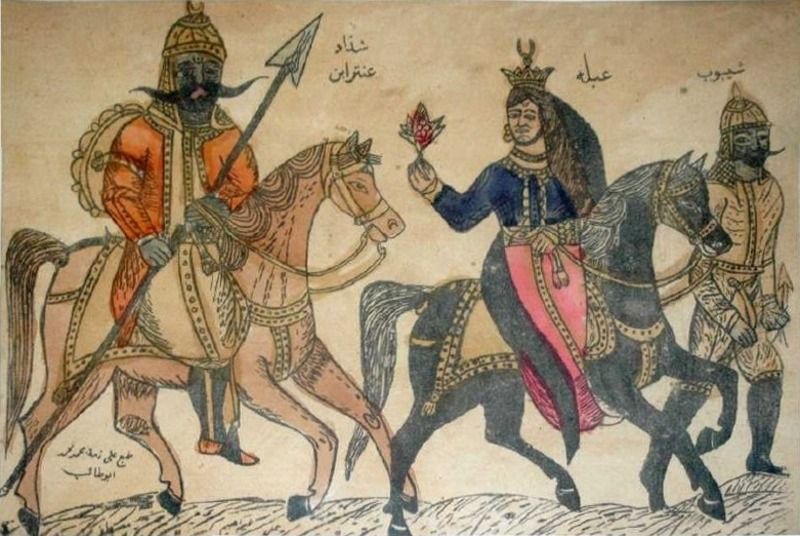File:Antarah ibn Shaddad & Abla.jpg
Appearance
Antarah_ibn_Shaddad_&_Abla.jpg (800 × 536 pixels, file size: 137 KB, MIME type: image/jpeg)
File history
Click on a date/time to view the file as it appeared at that time.
| Date/Time | Thumbnail | Dimensions | User | Comment | |
|---|---|---|---|---|---|
| current | 18:58, 22 January 2014 |  | 800 × 536 (137 KB) | Carnby | Better crop |
| 04:01, 29 March 2009 |  | 777 × 517 (115 KB) | BomBom | cropped image borders | |
| 22:48, 15 February 2009 |  | 800 × 536 (129 KB) | BomBom | {{Information |Description=A 19th-century tattoing pattern depicting pre-Islamic Arab hero and poet Antarah ibn Shaddad (left) and his lover Abla (middle) riding horses. The character on the right is called Shayyoub. The inscript |
File usage
The following 4 pages use this file:
Global file usage
The following other wikis use this file:
- Usage on ar.wikipedia.org
- شعر عربي
- عنترة بن شداد
- خط الرقعة
- أدب عربي
- ألف ليلة وليلة
- غزل (شعر)
- موسيقى عربية
- حمارة القايلة
- طرب أندلسي
- ثقافة العراق
- عبلة بنت مالك
- حماسة (شعر)
- عصور الأدب العربي
- قالب:ثقافة عربية
- سجاد عربي
- عنترة (مسرحية)
- شيبوب بن شداد
- ثقافة عربية
- مراسم الزواج عند العرب
- مطبخ عربي
- جاز شرقي
- أدب الملحمة العربية
- مستخدم:محمد رشاد ابوالنجا/ملعب12
- فن نبطي
- الفروسية في التاريخ الإسلامي
- مستخدم:EgyAbodggg5g70868
- رموز الشرف عند البدو
- الفن الفاطمي
- جوامع اللذة (موسوعة تراثية)
- مقام (مزار)
- قالب:تصفح مقالات مشروع العلمانية والمساواة
- ويكيبيديا:العلمانية والمساواة
- نثر مقفى
- Usage on arz.wikipedia.org
- Usage on az.wikipedia.org
- Usage on bn.wikipedia.org
- Usage on bs.wikipedia.org
- Usage on ca.wikipedia.org
- Usage on da.wikipedia.org
- Usage on de.wikipedia.org
- Usage on es.wikipedia.org
View more global usage of this file.



